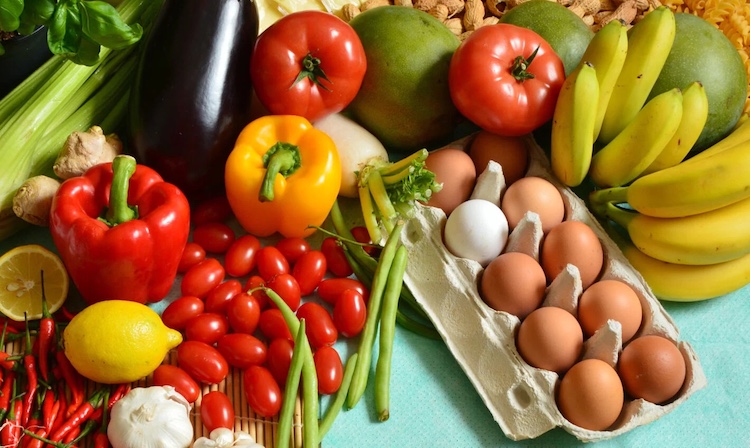By Rodrigo Pérez
SANTIAGO, Chile (IDN) — As many as 131.3 million in Latin America and the Caribbean have had to forego nutritious foods in 2020 because of the higher average daily cost of healthy diets in the region compared to those in other areas of the world. According to the new United Nations report Overview of Food Security and Nutrition 2022, in 2019, the figure amounted to about 123 million. JAPANESE | KOREAN | PORTUGUESE | SPANISH
While 22.5 per cent of Latin America and the Caribbean population could not afford a healthy diet, in the Caribbean, there were 52 per cent; in Mesoamerica, 27.8 per cent; and in South America, 18.4 per cent.
Equally worrisome is that between 2019 and 2021, the number of hungry people in the region increased by 13.2 million, reaching 56.5 million in 2021. South America experienced the highest increase in the number of hungry people. Between 2019 and 2021, hunger affected 7.9 per cent of the people in South America, 8.4 per cent in Mesoamerica, and 16.4 per cent in the Caribbean.
Pan American Health Organization (PAHO) Director Carissa F. Etienne said the lesson learnt is to “redouble efforts to address malnutrition in all its forms”. This implies the need to promote public policies to create healthy food environments, “eliminate industrially produced trans fats, implement front-end warning labelling, regulate advertising of unhealthy foods, tax sugary drinks, and support healthy eating and physical activity in schools”.
“Understanding the factors that determine poor dietary practices is key to finding solutions and ensuring that everyone in the region has access to healthy foods,” she added.
For example, countries with higher levels of poverty and inequality tend to have more significant difficulties accessing a healthy diet, which is directly associated with a higher prevalence of hunger, chronic malnutrition in boys and girls, and anaemia in women aged 15 to 49.
The UN report finds that the inability to afford a healthy diet is related to a country’s income level and, in turn, the incidence of poverty and the level of inequality.
The rise in international food prices experienced since 2020, exacerbated after the start of the conflict in Ukraine, and a regional increase in food costs above the general level, have increased the difficulties for people to access a healthy diet, notes the UN report.
“There is no individual policy that can solve this problem independently. National and regional coordination mechanisms need to be strengthened to respond to hunger and malnutrition,” said Mario Lubetkin, Assistant Director and Regional Representative for Latin America and the Caribbean of the Rome-based Food and Agriculture Organization (FAO) of the United Nations.
He added: “To contribute to the affordability of healthy diets, it is necessary to create incentives for the diversification of the production of nutritious foods aimed mainly at family farming and small-scale producers, take measures for the transparency of the prices of these foods in markets and trade, and actions such as cash transfers and improving school menus.”
Besides, trade and market policies can play a fundamental role in improving food security and nutrition. Greater transparency and efficiency improve inter-regional agri-food trade by replacing uncertainty with market predictability and stability.
“We are talking about the region of the world with the most expensive healthy diet, which particularly affects vulnerable populations—small farmers, rural women, and indigenous and Afro-descendant populations—who allocate a greater percentage of their income to the purchase of food,” noted Rossana Polastri, Regional Director for the International Fund for Agricultural Development (IFAD), also based in Rome.
“To reverse this situation, we must promote innovative solutions that diversify production and increase the supply of healthy food, and that improve small producers’ access to markets and quality food, including digital solutions that articulate food supply and demand,” added Ms Polastri.
The report also describes how some nutrition-sensitive social protection programs have worked and are essential to support the diets of the most vulnerable population, particularly in periods of crisis.
“Food insecurity will continue to rise due to the food and fuel price crisis caused by the conflict in Ukraine and the aftermath of COVID-19,” said Lola Castro, Regional Director of the Rome-based UN World Food Programme (WFP).
“We must act now, but how can we do it? Supporting governments to expand social protection networks because the pandemic once again demonstrated that social protection is useful to improve the affordability of a healthy diet, preventing crises like this from hitting affected populations even more,” she added.
Other food policies, such as nutritional labelling, subsidizing nutritious foods, and taxing unhealthy or non-nutritious foods that do not contribute to healthy diets, if well designed, can improve the affordability of healthy diets and prevent debilitating conditions and diseases related to overweight and obesity.
“For children to grow up healthy, it is not only urgent to ensure the availability of nutritious food at affordable prices. It is also necessary to develop public policies that guarantee adequate nutrition, in addition to nutritional counselling, focusing actions on the most vulnerable populations,” said Garry Conelly, UNICEF Regional Director for Latin America and the Caribbean.
The socioeconomic panorama of Latin America and the Caribbean is not encouraging. The most affected population groups are children under five and women, who suffer a higher prevalence of food insecurity than men. [IDN-InDepthNews – 13 February 2023]
Image credit: PAHO




